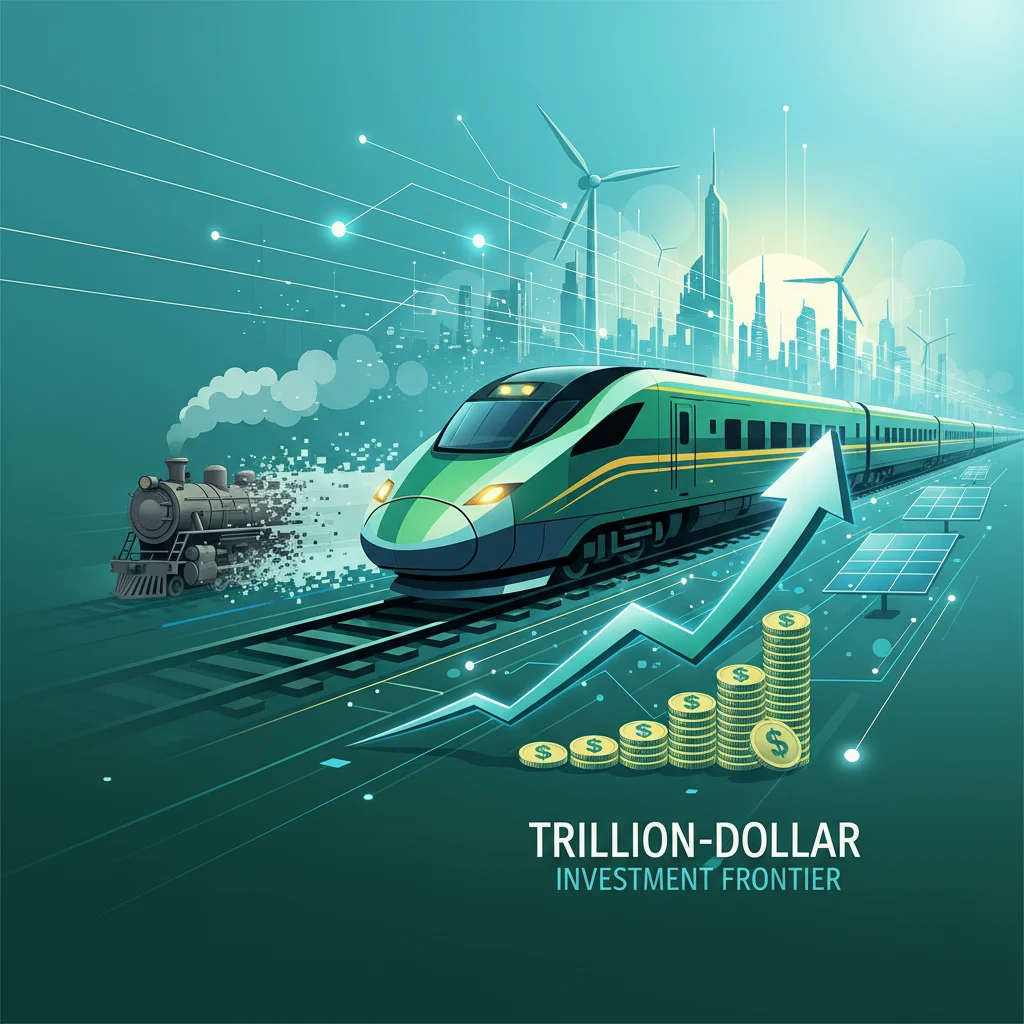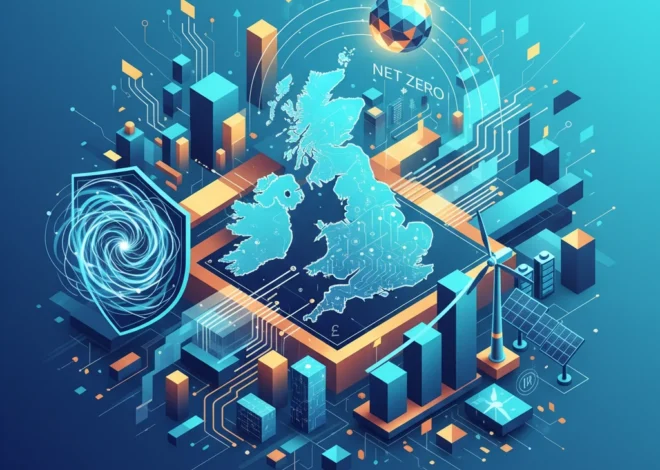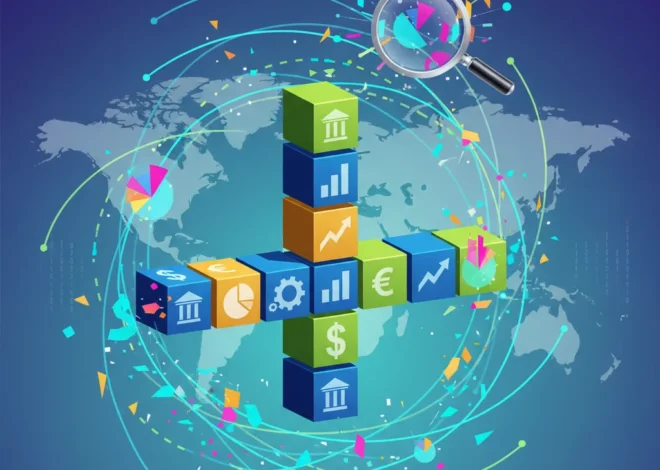
All Aboard the Green Express: Why Rail Electrification is the Next Trillion-Dollar Investment Frontier
The End of an Era: Why the Roar of the Diesel Locomotive is Fading
For over a century, the deep, rumbling roar of the diesel locomotive has been the unmistakable soundtrack of commerce and travel. It’s a sound synonymous with power, progress, and the relentless movement of the global economy. But that sound is beginning to fade, replaced by a quiet hum of profound transformation. We are witnessing the dawn of a new railway age—one powered not by fossil fuels, but by electricity. This isn’t merely an environmental upgrade; it’s a fundamental reimagining of our transportation infrastructure, and it represents one of the most significant investment opportunities of our time.
The reliance on diesel-powered trains has become an increasingly untenable position for modern economies. Beyond the obvious carbon emissions that contribute to climate change, diesel engines are a source of significant air and noise pollution, particularly in urban and suburban corridors. From a purely financial perspective, their operational costs are a constant drain. They require intensive maintenance, and their fuel costs are perpetually subject to the volatility of the global oil market—a major risk factor in any long-term economic planning. This dependency creates a vulnerability that governments and corporations are now urgently seeking to eliminate.
This push for change is being supercharged by a confluence of powerful forces. The global commitment to decarbonization, enshrined in agreements like the Paris Accord, has set clear targets that make diesel-powered transit a marked technology. Concurrently, the world of finance has been revolutionized by the rise of ESG (Environmental, Social, and Governance) principles. Today’s investors are not just looking for returns; they are demanding that their capital be deployed in sustainable, future-proof assets. This seismic shift in the investing landscape has unlocked trillions of dollars in capital, all searching for viable green projects. Rail electrification is emerging as a prime candidate for that capital.
The New Electrification Playbook: Beyond the Wires
For decades, “electrifying the railway” meant one thing: a colossal and costly undertaking to install thousands of miles of overhead power lines, known as catenary systems. While effective, the sheer scale and expense of this approach have made it prohibitively slow. However, a new wave of technological innovation is rewriting the playbook, offering a more flexible and financially viable path forward. As one industry expert noted, this shift is so significant that they’ve called it “the big one”, signaling a pivotal moment for the industry.
The core of this revolution lies in the ability to partially electrify networks, using cutting-edge technology to bridge the gaps. Railway operators now have a suite of new options, including the radical concept of getting rid of locomotives altogether in some cases, in favor of self-propelled electric carriages. This modular approach dramatically lowers the barrier to entry for decarbonizing rail networks.
Let’s examine the primary technologies driving this change:
| Technology | How It Works | Advantages | Disadvantages |
|---|---|---|---|
| Overhead Lines (Catenary) | Continuous power supplied from overhead cables to the train via a pantograph. | Highest power delivery; ideal for high-speed and heavy freight; proven technology. | Extremely high upfront cost; visually intrusive; complex to install and maintain. |
| Battery-Electric Multiple Units (BEMUs) | Trains equipped with large batteries, which charge on short electrified sections or at stations. | Eliminates the need for continuous overhead lines; high flexibility; quiet operation. | Limited range; battery weight and lifespan concerns; high demand on the grid during charging. |
| Hybrid Systems (e.g., Battery-Diesel) | Combines battery power for use in stations and urban areas with a diesel engine for long-haul routes. | Acts as a transitional technology; reduces emissions in populated areas; greater operational flexibility. | Still reliant on fossil fuels; complexity of maintaining two power systems. |
| Hydrogen Fuel Cell Trains | Onboard hydrogen is converted to electricity to power the motors, with water as the only emission. | Long range; rapid refueling; zero emissions at point of use. | High cost of “green” hydrogen production; storage and infrastructure challenges. |
This diverse toolkit allows for a tailored strategy. A country might fully electrify its busiest inter-city main lines with overhead wires while deploying BEMUs on less-trafficked regional routes, creating a cost-effective, hybrid network. This strategic flexibility is precisely why the financial and business worlds are now paying close attention.
Unpacking the Financial Case: From CapEx to Global Economic Impact
For finance professionals, the conversation always comes down to the numbers. The initial capital expenditure (CapEx) for rail electrification is undeniably high. But the true investment thesis lies in the dramatic reduction of long-term operational expenditure (OpEx) and the immense positive externalities for the wider economy.
The OpEx savings are multifaceted. Electric trains have fewer moving parts than diesel engines, leading to significantly lower maintenance costs and longer service intervals. The cost of electricity, especially when sourced from renewables through long-term power purchase agreements, is far more stable than the price of diesel fuel. A recent analysis suggests that the total cost of ownership for electric trains can be substantially lower over their 30-40 year lifespan (source). This creates a predictable, long-term return on investment that is highly attractive to institutional investors like pension funds and insurance companies.
The funding for these mega-projects is where modern banking and financial technology will play a pivotal role. We are already seeing the proliferation of Green Bonds, financial instruments specifically designed to fund projects with positive environmental outcomes. Governments are also establishing public-private partnerships (PPPs) to attract private capital and expertise. Looking ahead, we can envision fintech platforms that could democratize this asset class, allowing retail investors to buy fractional shares in green infrastructure bonds, directly funding the electrification of their local railway line.
Furthermore, innovative technologies like blockchain could provide unprecedented transparency and efficiency. A blockchain-based ledger could be used to track the provenance of green energy used to power the trains, verify carbon credits generated, and manage the complex international supply chains for batteries and components, ensuring ethical and sustainable sourcing. This level of transparency would further boost investor confidence and unlock new streams of capital.
For those focused on the stock market, the opportunities extend far beyond the train manufacturers. The boom will ripple through multiple sectors:
- Battery Technology: Companies specializing in high-capacity, long-life batteries for industrial use.
- Mining and Materials: Suppliers of copper (for wiring), lithium, cobalt, and other essential battery minerals.
- Engineering and Construction: Firms that will design and build the new infrastructure.
- Software and Grid Management: Tech companies creating the complex systems needed to manage power flow and train charging schedules.
The act of trading in these adjacent sectors could become a proxy for investing in the overall trend of global electrification. The entire ecosystem represents a new frontier in sustainable economics.
The Final Countdown: Why Europe's Bid to Rival SpaceX is a High-Stakes Game for the Global Economy
Navigating the Headwinds: Risks and Challenges on the Line
Of course, no transformation of this magnitude is without its challenges. A clear-eyed view of the risks is essential for any potential investor or policymaker. The primary hurdle remains the immense upfront cost and the logistical complexity of upgrading active railway lines without causing massive disruption to services. Political will and long-term policy certainty are crucial to de-risk these multi-decade investments.
As highlighted in the editor’s note, grid capacity is a major technical bottleneck. In many regions, the existing electrical infrastructure is simply not robust enough to support the massive new demand from a fully electric rail network. Significant, parallel investment in the grid is not just recommended; it’s a prerequisite for success.
Finally, the supply chain for key components, particularly batteries, presents a geopolitical risk. The concentration of mining and processing for critical minerals in a small number of countries creates potential vulnerabilities. Diversifying these supply chains and investing in battery recycling technologies will be critical to ensuring the long-term viability of this transition.
The £260m Paradox: Why UK Water Customers Are Getting a Refund While Bills Are Set to Soar
The Destination: A More Resilient and Prosperous Economy
Looking beyond the financial models and technical specifications, the electrification of our railways is a foundational investment in our future economic resilience and prosperity. Faster, more reliable, and more frequent electric train services can boost productivity by better connecting labor markets with economic centers. Shifting freight from road to rail reduces highway congestion, saving billions in lost time and fuel costs.
Moreover, this transition enhances energy security by reducing a nation’s dependence on imported oil. By powering transportation with domestically produced electricity—ideally from a diverse mix of renewable sources—countries can insulate their economies from the shocks of volatile global energy markets. The construction, manufacturing, and maintenance of this new infrastructure will also create hundreds of thousands of high-skilled, long-term jobs, providing a powerful economic stimulus.
The message for investors, financiers, and business leaders is unambiguous. The shift from diesel to electric rail is not a speculative future trend; it is an economic and environmental inevitability that is already underway. The technologies have matured, the political will is solidifying, and the financial incentives are aligning. The green express is leaving the station. The only remaining question is who will be on board to build it and reap the rewards.


